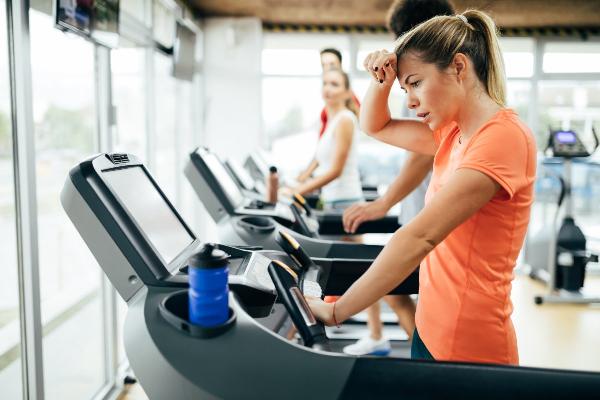How Do You Ensure a Hassle-Free Liposuction Recovery in Dubai?

Liposuction is one of the most popular cosmetic surgery procedures in Dubai, helping people achieve a more contoured and sculpted body. But the road to a successful liposuction transformation doesn’t stop once the procedure is over. Recovery plays a significant role in determining the final results, and ensuring a smooth recovery process is crucial to your overall experience. If you’re planning a Liposuction Dubai, knowing how to navigate the recovery phase will make a world of difference.
In this article, we’ll explore how to ensure a hassle-free liposuction recovery, from preparing for the procedure to post-treatment care. Let’s dive in and discover the essential steps to help you recover efficiently and with minimal discomfort.
1. Understand the Liposuction Recovery Timeline
The first step in ensuring a hassle-free recovery is understanding the typical liposuction recovery timeline. While each person’s healing process may vary, here’s a general breakdown of what you can expect:
First 24-48 hours: During the initial days after surgery, you may experience swelling, bruising, and some discomfort. Pain is typically manageable with prescribed medications.
Week 1-2: Swelling and bruising may still be visible, but these side effects should begin to subside. You’ll be advised to wear compression garments to help reduce swelling and support the healing process.
Week 3-4: By this stage, most people are able to return to normal activities, though strenuous exercise and heavy lifting should still be avoided.
1-3 months: Full recovery can take several months, and swelling will continue to gradually decrease. You may start to see the final results after this period.
2. Follow Pre-Procedure Guidelines
A smooth recovery begins before your liposuction procedure. Taking the necessary steps before surgery can significantly impact your healing process. Here are a few important guidelines to follow:
Consultation: A thorough consultation with a qualified specialist is essential. They will assess your medical history and set realistic expectations.
Medications and Supplements: Avoid blood-thinning medications and supplements for at least a week before surgery. Always follow your surgeon’s instructions regarding this.
Hydration and Nutrition: Maintaining proper hydration and a balanced diet before surgery can support your body in healing more efficiently.
3. Wear Compression Garments as Directed
Wearing compression garments after liposuction is critical for a hassle-free recovery. These garments help reduce swelling, support the skin as it shrinks, and contour the treated areas. Most patients are required to wear these garments for a few weeks following the surgery. Make sure to:
Wear the compression garment consistently as directed by your surgeon.
Keep the garment clean and dry to avoid skin irritation and potential infections.
4. Stay Active, But Avoid Overexertion
While it’s important to stay mobile during your recovery, you should avoid strenuous activities. Taking short walks can promote circulation and help prevent complications such as blood clots. However, you should refrain from:
Heavy lifting
High-intensity exercise
Activities that put too much strain on the treated areas
Gradually increasing your activity level as your body heals will ensure that you don’t rush the process and risk any setbacks.
5. Manage Pain and Swelling
It’s normal to experience some swelling and discomfort after liposuction. Managing these symptoms correctly will help you feel better and recover faster. Here’s what you can do:
Pain management: Take pain medications as prescribed by your surgeon. Over-the-counter pain relievers may also be suggested if needed.
Swelling: Apply cold compresses to reduce swelling in the first few days. Elevating the treated area can also help minimize swelling.
Massage: Once approved by your surgeon, gentle massage of the treated areas can help with the healing process and improve the final contour of the body.
6. Hydrate and Eat a Balanced Diet
Proper hydration and nutrition play a pivotal role in your recovery. Drinking plenty of water helps reduce swelling, flush out toxins, and support your body’s natural healing process. Additionally, eating nutrient-rich foods such as fruits, vegetables, lean proteins, and healthy fats will:
Boost your immune system to prevent infections.
Promote tissue healing and reduce inflammation.
Support overall well-being during your recovery journey.
7. Get Enough Rest and Sleep
Rest is essential for your body to heal properly. During the first few days, you may feel tired, and it’s important to listen to your body. Getting plenty of sleep will:
Reduce stress on your body and allow your cells to repair.
Promote faster healing and minimize complications.
Make sure to sleep in a comfortable position and avoid lying on the treated areas. Elevating your upper body with pillows can help reduce swelling and provide comfort.
8. Monitor Your Recovery and Follow Up with Your Surgeon
Regular follow-up visits with your surgeon are essential for ensuring everything is healing as expected. During these visits, your surgeon will monitor your progress, remove any stitches if necessary, and answer any questions you may have.
It’s also essential to monitor your own recovery. If you experience any unusual symptoms, such as increased pain, signs of infection, or severe swelling, reach out to your surgeon immediately.
9. Be Patient and Realistic with Your Results
While it’s tempting to see instant results, the full effects of Liposuction in Dubai may take several months to fully manifest. Be patient and allow your body the time it needs to heal. During this time, your skin will adjust, swelling will subside, and your new contours will become more apparent.
Conclusion
A smooth and hassle-free recovery after liposuction in Dubai is achievable with the right approach. By following the pre- and post-treatment guidelines provided by your surgeon, wearing compression garments, staying active (but not overexerting yourself), managing pain and swelling, eating a balanced diet, and getting enough rest, you can ensure a successful healing process.
Note: IndiBlogHub features both user-submitted and editorial content. We do not verify third-party contributions. Read our Disclaimer and Privacy Policyfor details.







